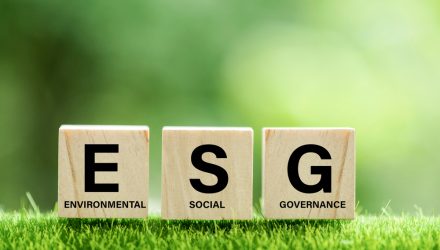The fixed income ESG market continues to grow, and in the first three quarters of this year there were over $300 billion of new corporate issuances of bonds that had defined guidelines on responsible investing, according to a white paper by State Street Global Advisors. With a variety of options available in environmental, social, and governance-adhering bonds, it’s important for investors to understand the differences.
Green bonds are the original bonds within the ESG umbrella; they began in 2007 and were originally issued by EIB and World Bank. With the growth and interest in investors, there has been a movement towards transparency that caused the creation of indexes that track green bonds.
The green bond benchmarks allow for investors to track the green bonds market, evaluate the risk within the market, and analyze how the green bonds are performing overall and compared to each other. Some of the most common indexes within green bonds are the S&P Green Bond Select Index, the Bloomberg MSCI Green Bond Index, and the Bank of America Merrill Lynch Green Bond Index.
Social bonds were the next ESG-related bond on the scene, first introduced in 2015 by the Spanish Instituto de Credito. This category of bonds follows a lot of the general green bond requirements as far as data and reporting quality information, but instead of being broadly focused, they focus solely on social programs and issues. The proceeds of these bonds are turned around and invested into projects such as affordable housing, access to healthcare, education, and financial services and work to better the lives of people.
Sustainable bonds were first issued by Starbucks in 2016 with the introduction of its U.S. corporate sustainability bond that brought in $500 million that went towards ethically sourced coffee from sustainable suppliers. Sustainability bonds have less stringent parameters on how profits from the bonds can be spent within ESG than do more narrow green bond allowances.
Blue bonds are the most recent of the ESG bond group and came onto the scene in October of 2018 when the World Bank, in partnership with the Seychelles, issued the first one. These are bonds that operate within the marine environment and go towards ESG projects that benefit the oceans.
SPDR Uses Its Own Sustainability Rating System for Companies
SSGA currently offers a fixed income ETF with an ESG lens, the SPDR Bloomberg SASB Corporate Bond ESG Select ETF (RBND), which invests in sustainability bonds. The fund tracks the Bloomberg SASB U.S. Corporate Ex-Controversies Select Index and provides a sampling strategy to generally carry the same risk and returns of the index.
The index measures the performance of investment-grade corporate bonds issued by companies with certain ESG qualities that also have risk and return qualities of the parent index, the Bloomberg U.S. Corporate Index. The parent index has public-issued, fixed-rate, taxable, U.S. dollar-denominated corporate bonds. These bonds are issued by U.S. and non-U.S. industrial, utility, and financial institutions with a maturity of a year or greater and with $300 million or more of par amount outstanding.
The index uses a Responsibility (R-Factor) developed by SSGA to score companies in the parent index for ESG criteria. The R-Factor takes into account ESG and corporate governance factors when scoring companies. It excludes companies that derive significant revenue from any of the following: extreme event controversies, controversial weapons, UN Global Compact Violations, civilian firearms, thermal coal extraction, and tobacco. Companies that do not have an R-Factor in the parent index are also removed.
The securities within the index are weighted to maximize the R-Factor of the index while also minimizing total risk compared to the parent index.
RBND can be used as a core building block for ESG investing and carries an expense ratio of 0.12%.
For more news, information, and strategy, visit the ESG Channel.

